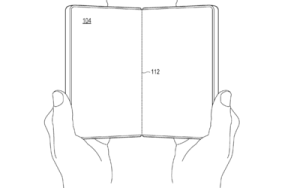Shorter Days Ahead? Earth's Accelerated Spin Sparks Timekeeping Debate
Scientists have observed that the Earth's rotation is accelerating slightly, leading to days that are a few milliseconds shorter. This seemingly small change has significant implications for global timekeeping. Traditionally, leap seconds are added to atomic clocks to compensate for the Earth's slowing rotation. However, if the current trend continues, experts predict that we may need to subtract a leap second by 2029 – a historic first. This adjustment would represent a major shift in how we synchronize human-made time with the planet's natural rhythms, illustrating the dynamic nature of time itself.

The Earth nominally takes 86,400 seconds to complete one rotation, defining a day. However, this duration is not constant. Various natural forces, including gravitational interactions and internal geophysical processes, induce subtle variations in the Earth's spin.
Historically, the Earth's rotation has been gradually slowing. For instance, during the age of dinosaurs, days were approximately 23 hours long. By the Bronze Age, days had lengthened but were still about half a second shorter than they are today. While the Earth may eventually experience 25-hour days, scientists estimate that this will occur in another 200 million years.
Since 2020, the Earth has exhibited a slight increase in its rotational speed, a phenomenon that has taken scientists by surprise. According to the International Earth Rotation and Reference Systems Service (IERS), this acceleration has been consistent.
The consequence of this acceleration is shorter days, albeit by only a few milliseconds. Should this trend persist, experts suggest that a negative leap second might be required by 2029 in Coordinated Universal Time (UTC). This would be the first instance of subtracting a leap second rather than adding one. A leap second is a one-second adjustment periodically applied to atomic clocks to maintain alignment with the Earth's irregular rotation. Because the Earth's spin and atomic time are not perfectly synchronized, leap seconds serve to bridge the gap.
To date, leap seconds have only been added to account for the Earth's deceleration. If the Earth continues to spin faster, however, a subtraction will become necessary to ensure that clocks accurately reflect the Earth's actual rotation.
According to timeanddate.com, the trend toward shorter days is projected to continue into 2025. Scientists have identified three dates on which the Earth's spin is expected to reach its maximum velocity:
Reports from USA Today indicate that on August 5, the length of a day could be 1.51 milliseconds shorter than the standard 24 hours – a significant deviation from a scientific perspective, even if imperceptible to humans.
The underlying cause of the recent acceleration remains uncertain. Scientists are exploring several possible explanations:
However, Leonid Zotov, a researcher at Moscow State University, noted that "Nobody expected this." Zotov co-authored a 2022 study on the subject but admitted that no existing model fully explains the phenomenon. While changes in the oceans and atmosphere can influence the Earth's spin, they are unlikely to be the primary driver of this substantial acceleration. Some researchers hypothesize that movement within the Earth's molten outer core could be a contributing factor.
Despite these intriguing developments, scientists emphasize that there is no cause for alarm. While an increase in the Earth's rotation speed is uncommon, such fluctuations are not without precedent. Over longer timescales, the planet continues to exhibit a gradual slowing trend.
The potential subtraction of a leap second in 2029 is merely a technical correction intended to maintain synchronization between atomic clocks and the Earth's rotation. It will not disrupt daily life, devices, or global operations. However, it serves as a compelling reminder that even a seemingly fixed concept like time is subject to the complex natural forces at play beneath our feet.
Newer articles
Older articles
 Vitamin D Could Slash Tooth Decay Risk by 50%, Study Suggests
Vitamin D Could Slash Tooth Decay Risk by 50%, Study Suggests
 Indian Cricket Star Mukesh Kumar and Wife Divya Singh Announce Birth of Son
Indian Cricket Star Mukesh Kumar and Wife Divya Singh Announce Birth of Son
 Shubman Gill's Captaincy Under Fire: Bold Calls Needed After England Test Defeat
Shubman Gill's Captaincy Under Fire: Bold Calls Needed After England Test Defeat
 Microsoft Aims for Foldable Redemption with Novel Hinge Design to Rival iPhone and Android
Microsoft Aims for Foldable Redemption with Novel Hinge Design to Rival iPhone and Android
 Popular Finance YouTuber's Account Hacked, Bitcoin Scam Promoted: Security Lessons Learned
Popular Finance YouTuber's Account Hacked, Bitcoin Scam Promoted: Security Lessons Learned
 Hollywood's Love Affair with India: Iconic Film Locations Revealed
Hollywood's Love Affair with India: Iconic Film Locations Revealed
 Esha Gupta Breaks Silence on Hardik Pandya Romance Rumors: 'We Were Just Talking'
Esha Gupta Breaks Silence on Hardik Pandya Romance Rumors: 'We Were Just Talking'
 Rishabh Pant Aims to Surpass Virat Kohli in Test Century Tally During England Series
Rishabh Pant Aims to Surpass Virat Kohli in Test Century Tally During England Series
 Prithvi Shaw Credits Sachin Tendulkar's Guidance for Career Revival After Setbacks
Prithvi Shaw Credits Sachin Tendulkar's Guidance for Career Revival After Setbacks
 Ashada Gupt Navratri 2025: Unveiling Dates, Timings, Significance & Secret Rituals
Ashada Gupt Navratri 2025: Unveiling Dates, Timings, Significance & Secret Rituals